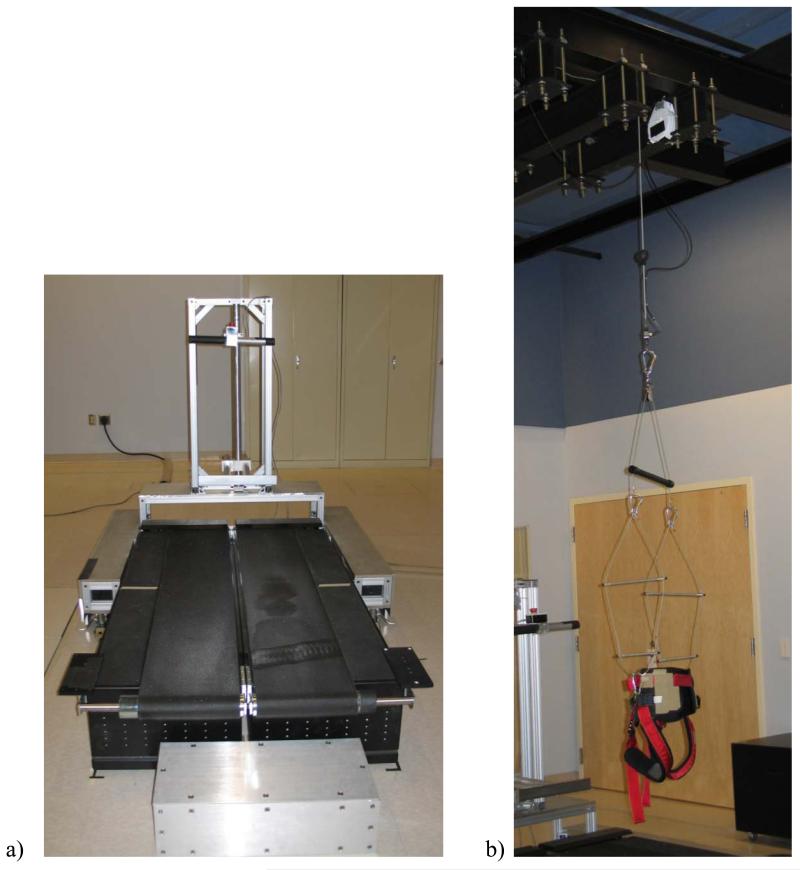Figure 1.
a) Walking speed was controlled and force platform data were collected by having subjects walk on an instrumented, split-belt treadmill (Model TM-06-B, Bertec Corp., Columbus, OH). Custom-made handrails were positioned in front of the subject to minimize interference with motion capture data collection. Subjects were not permitted to hold the handrail during testing. b) BWS levels were controlled by having subjects walk while wearing a pelvic harness connected to a custom-designed, overhead BWS system (Intelligent Automation, Inc., Rockville, MD). The harness was suspended from as high a point as possible to minimize contributions of the BWS to horizontal forces on the subject.

